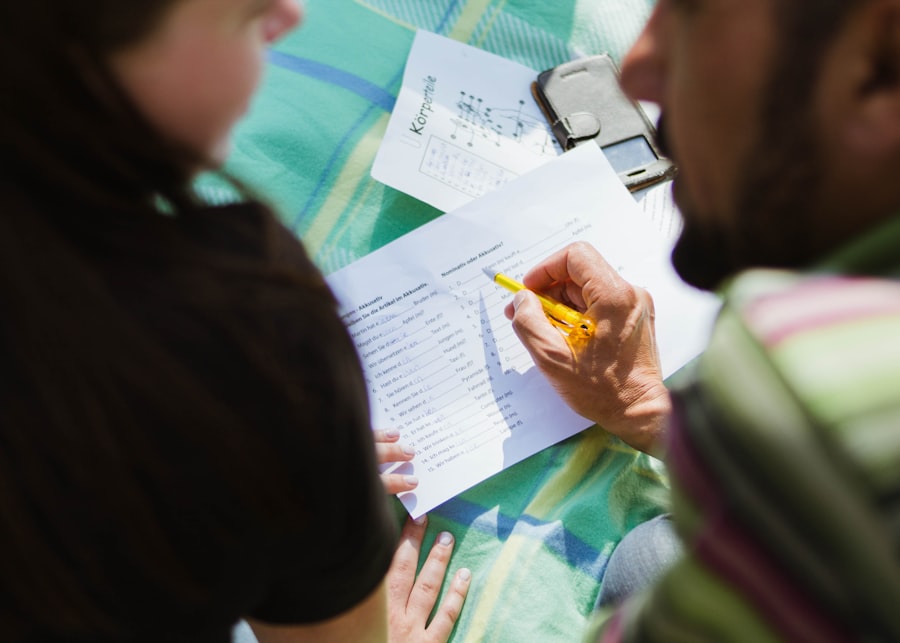In our journey as educators, we often encounter students who exhibit signs of emotional distress, and it is crucial for us to recognize these indicators early on. Emotional distress can manifest in various ways, including changes in behavior, withdrawal from social interactions, or a decline in academic performance. For instance, a student who once participated actively in class discussions may suddenly become quiet and disengaged.
We must remain vigilant and observant, as these changes can be subtle yet significant. Additionally, physical symptoms such as headaches, stomachaches, or fatigue may also signal that a child is struggling emotionally. By being attuned to these signs, we can take proactive steps to support our students before their distress escalates.
Moreover, we should consider the context in which these signs appear. Emotional distress can be triggered by various factors, including family issues, bullying, or academic pressures. It is essential for us to create an environment where students feel safe to express their feelings and concerns.
We can encourage open dialogue by fostering a culture of empathy and understanding within our classrooms. By doing so, we not only help students feel seen and heard but also empower them to seek help when they need it. Recognizing the signs of emotional distress is the first step in our commitment to supporting our students’ mental health and well-being.
Establishing a supportive classroom environment
Creating a supportive classroom environment is fundamental to the emotional and academic success of our students. We must strive to cultivate a space where every child feels valued and respected. This involves setting clear expectations for behavior while also promoting kindness and inclusivity among peers.
We can implement activities that encourage teamwork and collaboration, allowing students to build relationships and support one another. By establishing a sense of community within our classrooms, we can help students feel more comfortable sharing their thoughts and feelings, ultimately reducing the likelihood of emotional distress. In addition to fostering positive relationships among students, we should also be mindful of the physical environment in our classrooms.
A well-organized and inviting space can significantly impact a child’s emotional state. We can incorporate calming elements such as soft lighting, comfortable seating, and designated quiet areas where students can retreat when feeling overwhelmed. Furthermore, integrating tools like our COCO THINKS and COCO MOVES app can enhance this supportive atmosphere.
This educational app is designed specifically for children with special needs, including those with autism, ADHD, dyslexia, and Down syndrome. By utilizing such resources, we can provide tailored support that meets the unique needs of each student, ensuring that they feel understood and cared for.
Communicating with the student

Effective communication is key when addressing emotional distress in our students. We must approach conversations with sensitivity and empathy, allowing students to express their feelings without fear of judgment. Active listening plays a vital role in this process; we should give our full attention to the student and validate their emotions.
By acknowledging their feelings, we demonstrate that we genuinely care about their well-being. It is essential for us to ask open-ended questions that encourage students to share their thoughts and experiences, creating a safe space for dialogue. Additionally, we should be mindful of our language and tone when communicating with students in distress.
Using simple, clear language can help ensure that our message is understood without adding to their anxiety. We can also model appropriate emotional expression by sharing our own feelings in a relatable manner. This not only normalizes the experience of feeling overwhelmed but also teaches students valuable skills in emotional regulation.
By fostering open communication with our students, we empower them to articulate their needs and seek help when necessary.
Providing appropriate resources and referrals
As educators, it is our responsibility to connect students with appropriate resources and referrals when they are experiencing emotional distress. We should familiarize ourselves with the mental health services available within our schools and communities so that we can guide students toward the support they need. This may involve collaborating with school counselors or mental health professionals who specialize in working with children facing emotional challenges.
By establishing these connections, we can ensure that our students receive comprehensive care tailored to their individual needs. Moreover, we should also consider incorporating resources like our COCO THINKS and COCO MOVES app into our support strategies. This app offers engaging educational content designed specifically for children with special needs, helping them develop essential skills for emotional regulation and social interaction.
By introducing such tools into our classrooms, we not only provide immediate support but also equip students with lifelong skills that will serve them well beyond their time in school. Ultimately, by being proactive in providing resources and referrals, we can create a safety net for our students during times of emotional distress.
Implementing strategies for de-escalation
When faced with a student in emotional distress, it is crucial for us to implement effective de-escalation strategies to help them regain control over their emotions. One approach involves recognizing early warning signs of escalating behavior and intervening before the situation worsens. We can use calming techniques such as deep breathing exercises or mindfulness activities to help students center themselves during moments of heightened anxiety or frustration.
By teaching these strategies proactively, we empower students to manage their emotions independently. Additionally, creating a personalized de-escalation plan for each student can be beneficial. This plan may include specific triggers that lead to emotional distress and tailored strategies for coping with those triggers.
For instance, if a student becomes overwhelmed by loud noises, we might designate a quiet space where they can retreat when needed. Our COCO THINKS and COCO MOVES app can also play a role in this process by providing interactive activities that promote self-regulation skills. By implementing these strategies consistently, we can help students navigate their emotions more effectively while fostering a sense of safety within the classroom.
Collaborating with school counselors and mental health professionals

Collaboration with school counselors and mental health professionals is essential in addressing the emotional needs of our students effectively. These professionals possess specialized training and expertise that can enhance our understanding of mental health issues and provide valuable insights into best practices for supporting students in distress. By working together, we can create comprehensive support plans that address both academic and emotional challenges faced by our students.
Furthermore, regular communication with counselors allows us to stay informed about available resources and interventions tailored to specific needs. For instance, if a student requires additional counseling sessions or specialized programs, we can facilitate those connections promptly. Our COCO THINKS and COCO MOVES app can also serve as a bridge between educators and mental health professionals by providing data on student progress and engagement levels.
This collaborative approach ensures that we are all working toward the same goal: fostering an environment where every student feels supported and empowered to thrive.
Addressing the impact on the rest of the class
While it is vital to support individual students experiencing emotional distress, we must also consider the impact on the rest of the class. Emotional challenges can create disruptions that affect the overall learning environment; therefore, it is essential for us to address these dynamics thoughtfully. We should communicate openly with the class about emotions and mental health while emphasizing the importance of empathy and understanding toward one another.
Incorporating social-emotional learning (SEL) into our curriculum can be an effective way to promote awareness among all students regarding emotional well-being. By teaching skills such as empathy, conflict resolution, and self-regulation, we create a classroom culture that values emotional intelligence alongside academic achievement. Our COCO THINKS and COCO MOVES app can complement these efforts by providing engaging activities that reinforce SEL concepts while catering specifically to children with special needs.
Ultimately, by addressing the impact on the entire class, we foster an inclusive environment where every student feels supported.
Reflecting on the experience and seeking support for yourself
As educators navigating the complexities of supporting students in emotional distress, it is essential for us to engage in self-reflection regularly. Reflecting on our experiences allows us to identify areas for growth while acknowledging the challenges we face in this role. We should take time to consider what strategies have been effective in supporting our students and which areas may require further development or adjustment.
Additionally, seeking support for ourselves is equally important as we work tirelessly to support others. Engaging in professional development opportunities or connecting with colleagues who share similar experiences can provide valuable insights and encouragement. Our COCO THINKS and COCO MOVES app not only serves as a resource for our students but also offers tools for educators to enhance their own understanding of special needs education.
By prioritizing our well-being alongside that of our students, we create a sustainable approach to fostering emotional health within our classrooms while ensuring that we remain effective advocates for those we serve.
In exploring effective strategies for managing emotionally distressed students in the classroom, it is beneficial to consider a variety of educational resources that address cognitive and emotional challenges. One particularly relevant article can be found at Dynseo’s Cognitive Tests. This resource offers insights into cognitive assessments that can help educators understand the mental processes of their students, which is crucial when addressing emotional distress. By integrating cognitive testing into educational practices, teachers can better tailor their approaches to meet the individual needs of each student, thereby enhancing the overall learning environment and supporting students in managing their emotional states more effectively.



